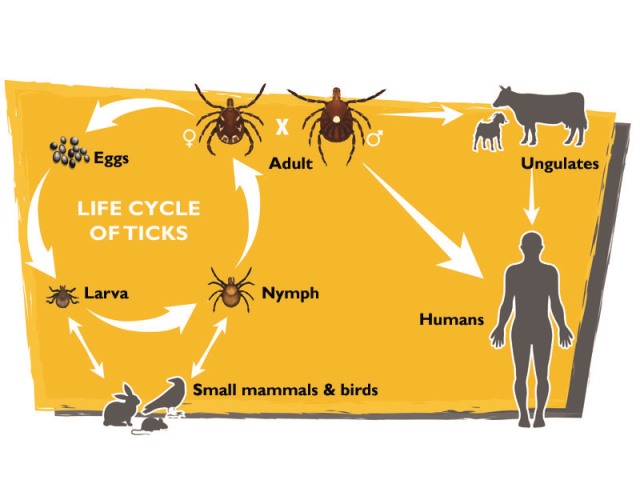
KARACHI: Every visit to a cattle market carries the risk of encountering ticks. While precautions to kill them are easily available, enforcement is almost non-existent.
Thousands of animals are transported across provincial lines ahead of Eidul Azha, and some of them, unfortunately, carry the Crimean-Congo haemorrhagic fever (CCHF) virus.
Government officials have largely blamed the prevalence of the disease on unkempt animals that are smuggled across the Afghan and Indian borders, similar to how foot-and-mouth disease (FMD) has long been blamed on cattle smugglers.
The CCHF virus is spread among animals by the bite of over 30 different species of ticks. A major complication is that popular sacrificial animals such as cattle, goats, and sheep can develop very high levels of the virus within their bodies without showing any symptoms of illness.
Congo virus check mandatory for sacrificial animals
The disease can be transferred to humans directly by the ticks, or by handling or eating the meat of an infected animal. It is also transmissible through direct or indirect bodily fluid transfer, so precautions must be taken when caring for an infected person.
There is no concrete policy to examine sacrificial animals arriving from across the borders, which leads to the continuing prevalence of the disease. The failure to develop and enforce mechanisms for veterinary examinations has been blamed on the provincial livestock departments.
History of the disease
As its name implies, the disease CCHF was first detected in the Crimean region. In 1944, soviet scientists had identified a case of what they called Crimean haemorrhagic fever, though they were unable to determine the cause. In February 1967, virologists identified the disease based on samples taken from the Belgian Congo in 1956. In 1969, the Russian strain identified from a case in 1967 was found to be the same as the Congo strain.
The International Committee on Taxonomy of Viruses proposed Congo–Crimean hemorrhagic fever virus as the name of the disease, but the Soviets insisted on 'Crimean–Congo', which was eventually agreed to despite going against scientific nomenclature principles.
The disease is common across Africa, Eastern Europe, the Middle East, and Central Asia, with cases also reported as far west as Portugal, and as far east as India.
Flu, fever, severe body pain, severe headache, nausea, vomiting and several other symptoms persist for five to seven days in an infected person. Loss of appetite and weakness are also common. Small spots begin to appear on the body, followed by mouth blisters and bleeding gums. Serious cases will often feature nosebleeds. The shrinking number of platelets, responsible for the thickening of blood in the affected individual, is a dangerous sign.
Fatality rate estimates range from as low as 10 per cent to as high as 40 per cent.
Testing for CCHF is possible only in biosafety labs, and several tests may be required before a definitive diagnosis of the disease.
Domestically, disease clusters can almost always be traced to cattle markets, especially those where hygiene priorities are lax. Spraying germicides is an option, but enforcement of agricultural regulations requiring de-ticking farm animals before transportation or delivery is the best control method.
Risk reduction measures form humans include not taking children to cattle markets, wearing face masks, closed shoes and full-sleeve shirts with long pants.
Precaution remains the only treatment because no effective vaccine has been developed for the virus, despite a few claims of isolated success.
In Pakistan, the first CCHF fatality was reported in Rawalpindi in 1976. Dr Mateen was infected while caring for an infected patient. At least seven people including a doctor and four minors died due of CCHF in 2002. In 2015, 56 cases of CCHF were reported in Balochistan, out of which 13 died. Another 41 people were diagnosed in 2018, out of whom 16 died. There have been two fatalities this year.



















1713272658-0/Copenhagen-fire-(1)1713272658-0-270x192.webp)





















COMMENTS
Comments are moderated and generally will be posted if they are on-topic and not abusive.
For more information, please see our Comments FAQ